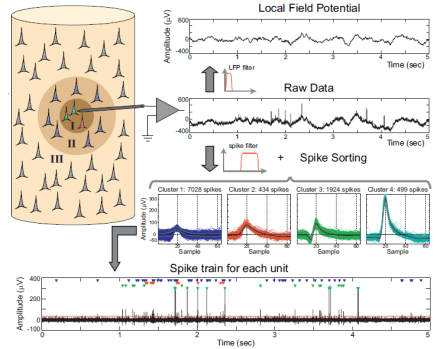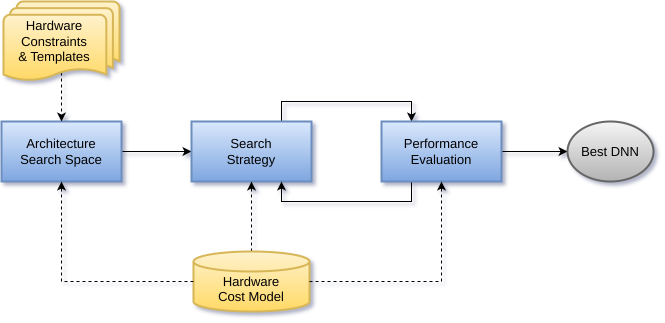Embedded Artificial Intelligence
Optimizations for Neural Networks
Our research focuses on optimizing AI models, particularly deep learning (DL) architectures, for deployment on resource-constrained IoT devices such as embedded FPGAs. The focus is especially on the quantization of neural networks, i.e. the reduction of numerical precision of model parameters to decrease memory usage and computational load, as well as on the use of transformer models.
 In this context, we generally investigate optimizations for the training of networks while striving for the quickest and most efficient computations possible, for instance, through the use of separable convolutions.
In this context, we generally investigate optimizations for the training of networks while striving for the quickest and most efficient computations possible, for instance, through the use of separable convolutions.
In addition, in quantised neural networks (QNN), a low bit depth of two or fewer bits, in conjunction with the properties of FPGAs, allows operations within the network to be pre-computed to be stored in the LUTs of the configurable logic blocks for the shortest possible access time.
Contact: Lukas Einhaus, M.Sc.
Our research focuses on energy-efficient time-series analysis on resource-constrained embedded FPGAs. We work on quantization and hardware-aware deployment of deep neural networks (especially Transformers) on embedded FPGAs. Our work covers forecasting, classification, and anomaly detection, with comparative studies involving LSTM models, 1D-CNN models and other hybrid architectures. Key methods include multi-objective optimization and mixed-precision quantization to balance accuracy, latency, and energy use, supported by an automated deployment framework across different FPGA platforms.
Our automated toolchain, ElasticAI.creator, is used for model development and deployment. The goal of the research is to create a balance between model accuracy and hardware-related consumption (such as latency, energy). These findings are applied in our research project RIWWER.
Contact: Tianheng Ling, M.Sc.
Spike sorting and online training for quantised neural networks
 Another exciting application of quantised neural networks, which is currently being studied in the Sp:Ai:Ke research project, is the time series analysis of (real biological) neural signals.
Another exciting application of quantised neural networks, which is currently being studied in the Sp:Ai:Ke research project, is the time series analysis of (real biological) neural signals.
The records of such signals always include whole bundles of signals as
well as a certain amount of background activity. To get a clear picture of individual neural activities, sophisticated signal processing is required, which in addition has to have adaptive qualities.
More precisely, adjustments to the signal classification become necessary at runtime (i.e. online) due to the neuronal drift; the deployed network must be continuously readjusted with only few exemplary data samples.
Contact: Leo Buron, M.Sc.
Hardware-aware neural architecture search
Finding the ideal neural architecture for a particular use case can take a lot of time and trial and error.

Neural Architecture Search (NAS for short) automates this design step and even finds architectures that outperform those created manually in some cases. Furthermore, even the required resource estimation can be automated by a Deep Neural Network. In this way, the tailored deployment of neural networks is simplified greatly.
The method, which we currently focus on, is based on the combination of evolutionary algorithms and reinforcement learning and discovers optimal architectures by deliberately mutating, recombining and weeding out contenders. Our requirements typically include efficient operation on resource-constrained hardware, hence hardware costs such as latency or energy consumption are included as optimisation criteria in the architecture search.
Our ongoing studies once again focus on applications in the domains of signal processing and time series analysis, e.g. to find latency-optimized architectures for the simulation of time-variant non-linear audio effects.
Contact: Christopher Ringhofer, M.Sc.

Building on this work, it is becoming increasingly evident that the performance of neural architectures strongly depends on subsequent compression techniques. In most cases, NAS and compression methods such as quantization are considered in completely independent steps to keep the search space manageable. However, this approach has the drawback that dependencies between the chosen architectural parameters and the effects of the applied
quantization scheme are not taken into account during NAS, which can lead to suboptimal models. Our current research therefore investigates ways to combine both approaches in a meaningful manner, with a particular focus on expanding the search space and refining the evaluation strategy for the sampled models.
Contact: Natalie Maman, M.Sc.
The TransfAIr project plays a key role in translating this research into practical applications. Within the project, the development of the ElasticAI.Explorer toolbox is being advanced. This toolbox is designed to provide tools that enable AI models to be executed on various embedded systems and to be automatically optimized for them through HW-NAS.
The goal is to facilitate and improve the “TransfAIr” of AI models across diverse hardware environments. Particulary, the focus lies on the deployment on different hardware platforms as well as the extension and enhancement of the software stack.
Contact: Robin Feldmann, M.Sc.
Delta Compression
The increasing size of modern neural networks poses significant challenges for embedded systems. Especially in the context of energy-efficient hardware such as FPGAs or microcontrollers, there is a growing need for methods that reduce memory consumption and computational effort without substantially effecting model quality.
One approach explored in our research is delta compression. Instead of storing full model parameters, only deltas are retained. Since Deltas can be compressed with less loss of information, considerable memory savings can be achieved which enables the deployment of larger models in small systems. Delta compression opens up new opportunities for using AI models in embedded environments. It provides an alternative to heavily quantized or structurally reduced network architectures and allows more complex models to operate in resource-constrained settings. At the same time, the compression process almost inevitably introduces information loss, which may impact model performance. Developing suitable methods for error mitigation and adaptive compression strategies is therefore a central topic of ongoing research.
In the long term, delta compression will be combined with additional optimization techniques such as structural pruning or quantization-aware training to enable AI models that are both robust and resource-efficient.
Contact: David Peter Federl, M.Sc.


